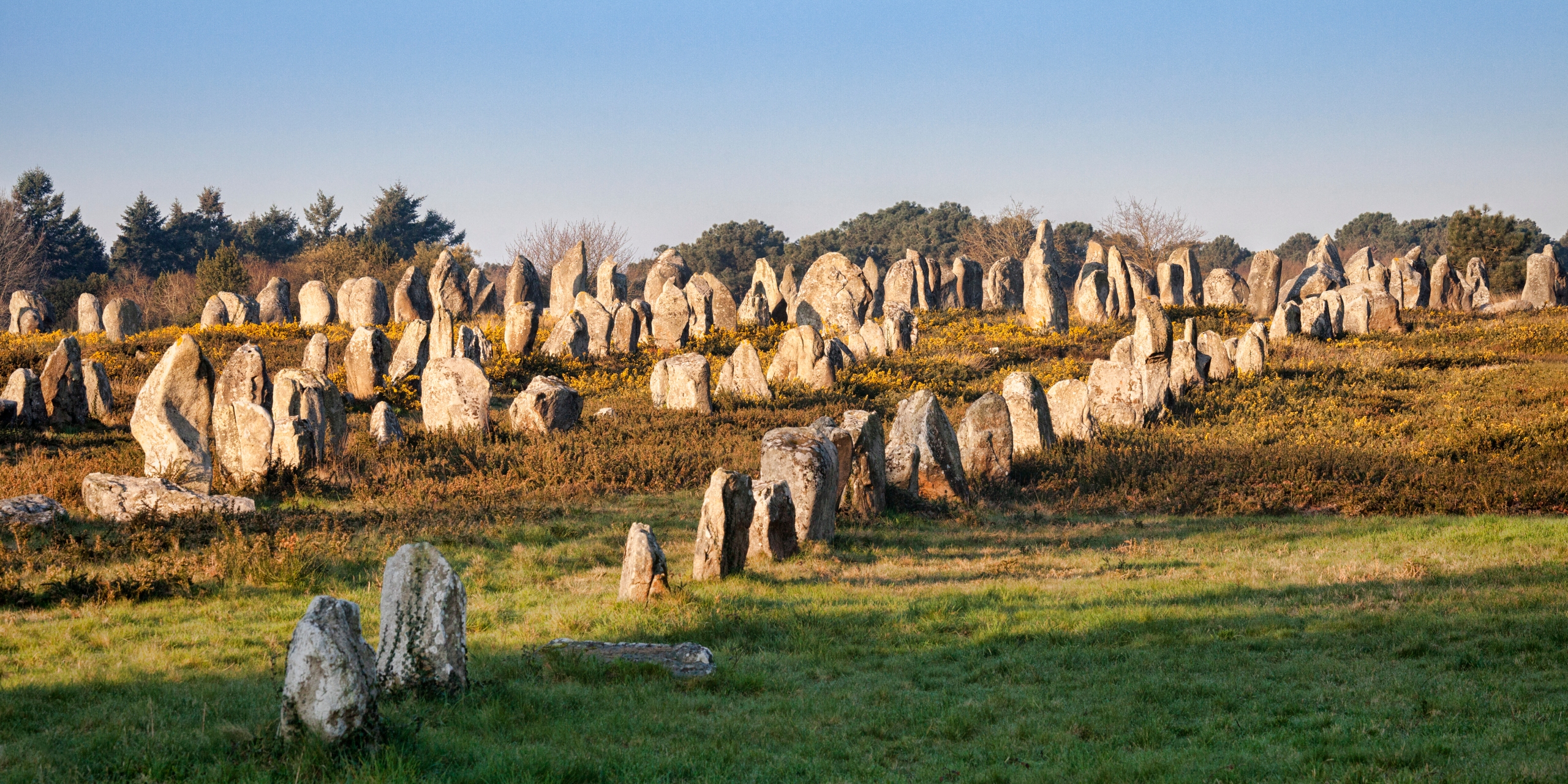In the quiet countryside of Brittany, France, the Carnac Stones stand as one of the most enigmatic archaeological wonders in Europe. This extraordinary site features over 3,000 megaliths arranged in rows, clusters, and circles, making it the largest collection of standing stones in the world. Their exact purpose remains shrouded in mystery, but many scholars speculate that they held profound spiritual significance in Neolithic society. Could these stones, erected between 4500 and 3300 BCE, have been part of a prehistoric pilgrimage route?
The landscape of Carnac
The Carnac Stones stretch across four main alignments: Ménec, Kermario, Kerlescan, and Petit-Ménec. These formations extend for nearly four kilometers, creating an awe-inspiring tableau of megalithic architecture. The alignments are interspersed with dolmens, tumuli (burial mounds), and isolated menhirs, suggesting a site with multifaceted functions.
The scale and precision of these arrangements demonstrate a remarkable level of planning and labor. Archaeologists estimate that thousands of individuals may have worked for generations to quarry, transport, and erect the stones, using only rudimentary tools and human ingenuity. Such collective effort implies that the Carnac Stones held profound importance for the community that built them.
Purpose and symbolism: A prehistoric enigma
The function of the Carnac Stones remains a topic of debate. Some theories suggest that they served as astronomical observatories, aligning with celestial events like solstices and equinoxes. Others propose that they marked territorial boundaries or were erected as memorials for the dead.
One of the most compelling hypotheses is that the site was a center for religious rituals and spiritual gatherings. The alignment of the stones, particularly their orientation toward the sun and other celestial bodies, hints at their potential use in ceremonial practices tied to seasonal cycles. Could these rituals have drawn individuals or groups from distant regions, transforming Carnac into a site of prehistoric pilgrimage?
The odea of prehistoric pilgrimage
If the Carnac Stones were indeed a destination for pilgrimage, it raises fascinating questions about the nature of spirituality and travel in the Neolithic era. Pilgrimage, even in its earliest forms, involves movement toward a sacred site believed to hold spiritual power. This journey often fosters community bonds, shared rituals, and personal transformation. A prehistoric pilgrimage to Carnac might have involved:
- Seasonal Gatherings: Groups may have traveled to Carnac during solstices or other significant times of the year, participating in communal rituals.
- Spiritual Renewal: The act of walking to the stones could symbolize a journey of purification or a connection to ancestral spirits.
- Knowledge Exchange: Pilgrimages often facilitate cultural exchange. Carnac may have been a hub where ideas, goods, and spiritual practices were shared.
The sheer scale of the site suggests it served as a focal point for the broader community. If Carnac was indeed a pilgrimage destination, it could reveal a shared spiritual geography that connected scattered Neolithic populations across Brittany and beyond.
The legacy of the Carnac Stones
While the exact purpose of the Carnac Stones remains elusive, their presence speaks to the creativity, faith, and social cohesion of prehistoric societies. The stones continue to captivate modern visitors, drawing tourists, researchers, and spiritual seekers from around the world.
Could the awe we feel today echo the reverence experienced by those who stood before these stones thousands of years ago? Although the details of their beliefs and practices have been lost to time, the Carnac Stones remind us of humanity’s enduring quest to connect with the sacred.
The question of whether Carnac was a site of prehistoric pilgrimage adds depth to our understanding of ancient spirituality. It invites us to imagine a time when people traversed wild landscapes, seeking meaning in the vast alignments of stone. Whatever their original purpose, the Carnac Stones endure as a testament to the spiritual imagination of our prehistoric ancestors.





